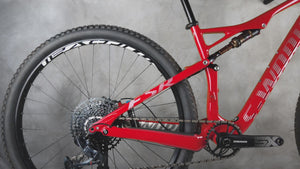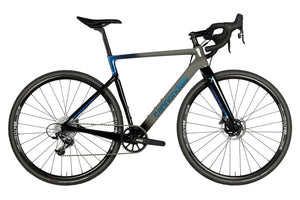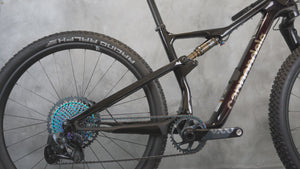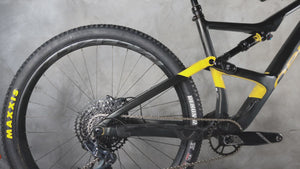Do you know anything about bicycle bearings? We explain
In this Article
Published on 5 September 2024
Bearings are one of the most essential, but often overlooked components of a bicycle. They are, however, essential for the proper functioning of your two-wheeler. Without them, you would not be able to steer, ride, pedal, or operate the transmission. Bearings are found in hubs, the bottom bracket, the headset, suspension pivots, pedals, and much more – in summary, every moving part of your bike is equipped with a type of bearing.
Whether you are a casual cyclist or a road bike or MTB enthusiast, understanding how bearings work and why they are crucial can help you optimise their performance and extend their lifespan. In this article, we explain everything you need to know about bicycle bearings.

What is a bicycle bearing?
A bicycle bearing is a key component that allows the wheels to turn smoothly with minimal friction. It is a small assembly of balls or rollers in steel located between two metal rings: an inner ring and an outer ring.
On a bike, bearings are present in several key parts, including:
- The wheel hubs: bearings in the hubs allow the wheels to turn freely and without excessive resistance. The inner ring is fixed to the wheel axle, while the outer ring is in contact with the hub, the central part of the wheel. As the wheel turns, the balls or rollers roll between the two rings, reducing friction between the moving parts. This mechanism allows the wheels to turn smoothly and efficiently, minimising the effort required to pedal. Bearings also absorb small vibrations and shocks, contributing to a more comfortable ride.
- The bottom bracket: these bearings facilitate the smooth movement of the cranks during pedalling.
- The headset: here, the bearings ensure smooth rotation of the handlebars and therefore precise control of the bike.
- The pedals: some bike pedals are also equipped with bearings for smoother pedalling.
Why are bearings so important?
Bearings play a crucial role in your bike's performance and longevity. Proper maintenance of bearings ensures smooth movement, reduces rolling resistance, and improves your bike's responsiveness. Worn or poorly maintained bearings can, however, cause excessive friction, lead to premature wear of other components, and even compromise the cyclist's safety.
Types of bicycle bearings
On a bike, there are several types of bearings used in different parts, each with specific characteristics and applications. Here are the main types of bearings:
Radial ball bearings (or standard ball bearings)
These are the most common on bicycles. They consist of balls made of steel or ceramic enclosed between two metal rings. Ball bearings are generally used in wheel hubs and pedals due to their ability to support high radial loads.
They are used in wheel hubs, bottom brackets, and sometimes headsets.

Cartridge bearings (or sealed bearings)
These bearings are pre-assembled in a sealed cartridge that protects the balls and lubricant from dust, water, and dirt. Often used in modern wheel hubs, bottom brackets, and headsets, they require little maintenance and are designed to be replaced when worn out.

Ceramic bearings
Ceramic bearing balls offer very low friction and a longer lifespan compared to steel bearings. They are used in high-end applications, including wheels, bottom brackets, and derailleurs. They are lighter and more resistant to corrosion, but also more expensive.

Hybrid bearings
These are a combination of ceramic balls with steel rings. They offer a compromise between the benefits of ceramic bearings and the robustness of steel bearings.
How to maintain your bike's bottom bracket bearings?
Bearing maintenance is essential for optimal performance. They are sealed, but over time, water can enter, and their grease may degrade.
Required materials
For proper bearing maintenance without disassembly, you will need a clean cloth, an 8mm Allen key, and an appropriate bike grease or bearing lubricant.
Essential steps to clean your bike’s bottom bracket bearings
- remove the bottom bracket;
- carefully remove the dust cap and seal to avoid damaging the bearing;
- degrease the bearing directly with a degreaser, leaving it to act for a few minutes;
- scrub with a toothbrush and clean off any remaining residue with a cloth;
- apply grease generously to the bearing and rotate it to distribute the product;
- replace the dust cap;
- don't forget to grease the axle as well as the inside of the bottom bracket.
A small exception for sealed bearings: they do not require maintenance. When they start to grind or if there is no grease left, replace them.

When should you replace the bearings?
Is your bike making unusual noises and you can’t identify the source? These noises might be coming from the bearings. It is essential to keep your bike in good condition to prevent any issues or accidents. Improper maintenance can lead to wear and cause major problems.
Due to their location, the wheel bearings on your mountain bike or road bike are particularly exposed to water, dust, and other impurities. Therefore, it is normal for them to wear out, especially if you frequently ride in the rain or on muddy trails.
It is crucial to replace your bike's wheel bearings when they are worn or damaged, as this can affect the performance and safety of your bike. Look out for these four signs that indicate it’s time to replace them:
If you hear a squeaking or grinding noise when you spin the wheels, this is a clear indicator that the bearings are worn and need replacing. This noise occurs because they no longer rotate smoothly and rub against the surrounding metal parts. Ignoring this sign can worsen the problem over time.
If you feel play in the steering of your bike despite proper tightening, this is another indicator that the bearings need to be replaced. This play occurs when the steering bearings are worn or the steering is not properly tightened.
If you notice vibrations in the wheels while riding, this may indicate that the bearings need replacing. These vibrations occur when the bearings no longer rotate smoothly, leading to excessive friction. If this issue is not resolved, the vibrations may worsen over time, making your bike harder to ride.
Full-suspension bikes have bearings in the swingarm and associated linkages. When these bearings are worn or seized, they can produce unpleasant squeaks. It is crucial to replace them promptly, as a seized bearing can prevent the swingarm from functioning properly, increasing the risk of damaging your bike frame.
It is difficult to give a precise lifespan for bearings as it depends on many factors such as the type of component, usage conditions, and maintenance performed. However, regularly check their condition and replace them as soon as you detect signs of wear or damage.
Bearings are a vital component for the proper functioning of your bike. If you understand their importance and take the time to maintain them properly, it can make all the difference between a pleasant ride and a difficult one. By taking care of your bearings, you ensure not only better bike performance but also a smoother and safer cycling experience. Remember, as with any bike component, prevention is key to avoiding costly problems and unexpected breakdowns. Keep your bearings in good condition, and your bike (reconditioned) will thank you!




























































